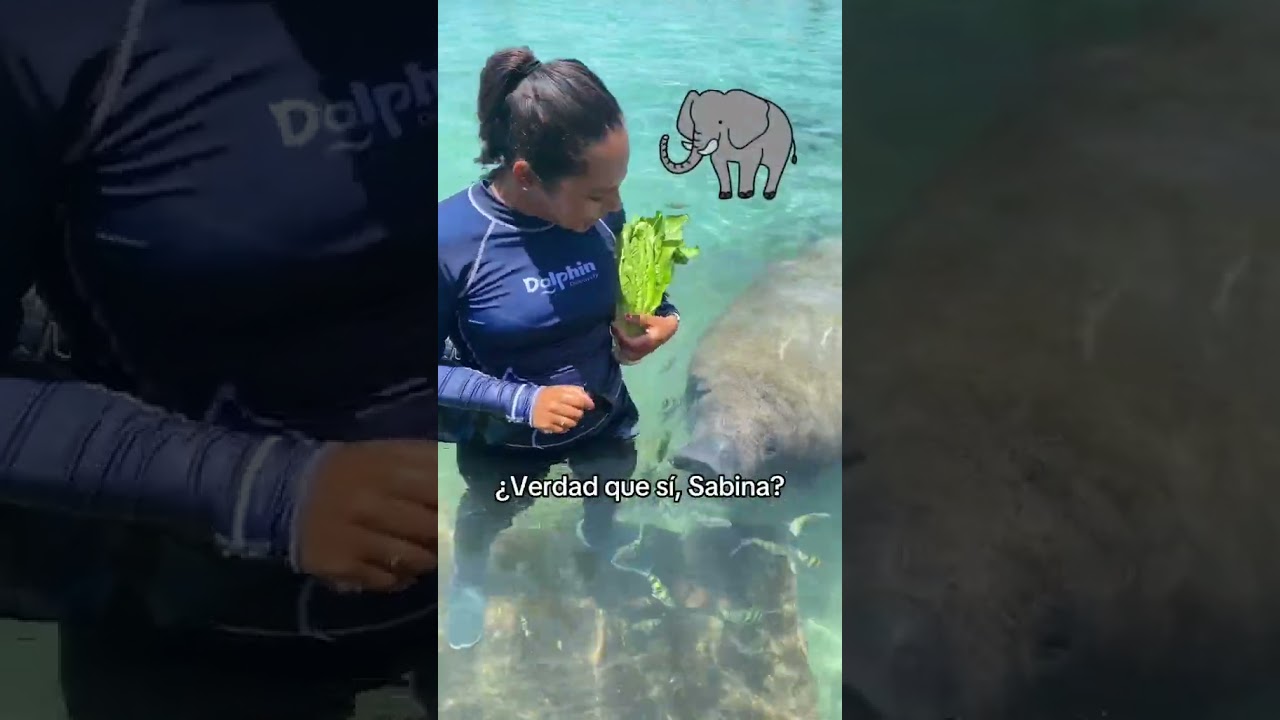- Understanding the surprising connection between manatees and elephants and their evolutionary lineage.
- Exploring the behavior and habitat preferences of manatees and elephants, highlighting their adaptations to their respective environments.
- Conservation efforts and challenges facing manatee and elephant populations, emphasizing the need for sustainable practices.
- The role of zoology and zoo management in educating the public about manatees and elephants, and the impact of conservation programs.
- The significance of videos and digital media in raising awareness and promoting wildlife conservation efforts for species like manatees and elephants.
Manatees and elephants might seem worlds apart at first glance. One roams aquatic environments while the other trudges through dense forests and savannas. Yet these two majestic creatures share a fascinating evolutionary connection. Both belong to the clade of mammals known as Afrotheria, which also includes aardvarks and hyraxes. This shared ancestry reflects in specific physiological traits, like thick skin and a similar respiratory system structure. Understanding this ancient linkage broadens our appreciation of biodiversity and reinforces the importance of conserving diverse life forms for ecosystem balance.
Manatees are gentle aquatic mammals found in warm coastal areas, rivers, and springs. Known as sea cows due to their herbivorous diet, these creatures spend most of their time grazing on seagrass beds. Unlike other marine animals, manatees surface for air every few minutes. Their large lungs enable them to stay submerged for extended periods while maintaining buoyancy. Additionally, their paddle-shaped tails offer efficient propulsion through water, and their flexible upper lips assist them in gathering food. Although slow-moving, manatees turn quickly to avoid predators or obstacles, showcasing their adaptability in aquatic environments.
Elephants, on the other hand, are the largest land mammals, primarily residing in Africa and parts of Asia. Their massive bodies, large ears, and long trunks illustrate their advanced evolutionary development. The trunk serves multiple purposes: guiding food and water to their mouths, dusting their skin, and communicating with other elephants. Their tusks, which are elongated incisor teeth, are used for digging and as tools for various tasks. Elephants are highly social animals, forming complex matriarchal societies that highlight their intelligence and emotional capabilities. Their migratory behavior is crucial for seed dispersal, demonstrating their ecological importance.
Both manatees and elephants face significant conservation challenges. Manatees suffer from habitat destruction, boat collisions, and climate-induced food scarcity. While legally protected in many regions, their populations remain vulnerable due to these ongoing threats. Conservation efforts include designating marine sanctuaries, implementing boat speed regulations, and extensive rehabilitation programs for injured manatees. Collaborative efforts between governments, NGOs, and local communities are vital in promoting manatee recovery and ensuring the survival of these gentle giants.
Elephants are threatened by poaching for ivory, human-wildlife conflicts, and shrinking habitats. Anti-poaching campaigns have achieved some success, but demand for ivory continues to fuel illegal hunting. Additionally, expanding agricultural lands and infrastructure projects encroach upon elephant habitats, leading to frequent clashes with humans. Conservation strategies involve securing protected areas, creating wildlife corridors, and engaging local communities to develop wildlife-friendly practices. Education and awareness campaigns are equally crucial in altering detrimental perceptions about elephants and fostering coexistence.
Zoology and zoo management play a pivotal role in conserving manatee and elephant populations. Zoos worldwide participate in breeding programs and research initiatives that enhance our understanding of these animals. Through captive management, scientists can study animal behavior, genetics, and health—insights that are invaluable for in-situ conservation efforts. Zoos also educate the public, fostering a culture of respect and responsibility for wildlife conservation. Visitors learn about the delicate balance of ecosystems and the essential roles animals play within them, driving support for conservation policies and programs.
The advent of digital media has revolutionized the reach and impact of wildlife conservation messages. Videos and documentaries capture the intimate lives of manatees and elephants, showcasing their beauty, intelligence, and vulnerability. Such content raises awareness, inspiring greater public engagement and financial support for conservation initiatives. Social media platforms amplify these efforts, connecting global audiences with conservation goals. By sharing stories of success and struggle, digital content fosters a global community of conservation advocates committed to protecting manatees, elephants, and countless other species for future generations.
The connection between manatees and elephants serves as a profound reminder of the intertwined nature of life on Earth. By understanding their evolutionary links, behaviors, threats, and the ongoing efforts to conserve them, we embrace a broader narrative of biodiversity preservation. The future of these remarkable animals depends on our collective commitment to sustainable practices and innovative conservation strategies. Through zoology, digital media, and public engagement, we can nurture a thriving world for manatees, elephants, and the myriad of life with whom we share this planet.
*****
Source Description
Te compartimos algunos datos curiosos de los Manatíes por nuestros expertos de Dolohin Discovery Isla Mujeres.
#manaties #dolphindiscovery


